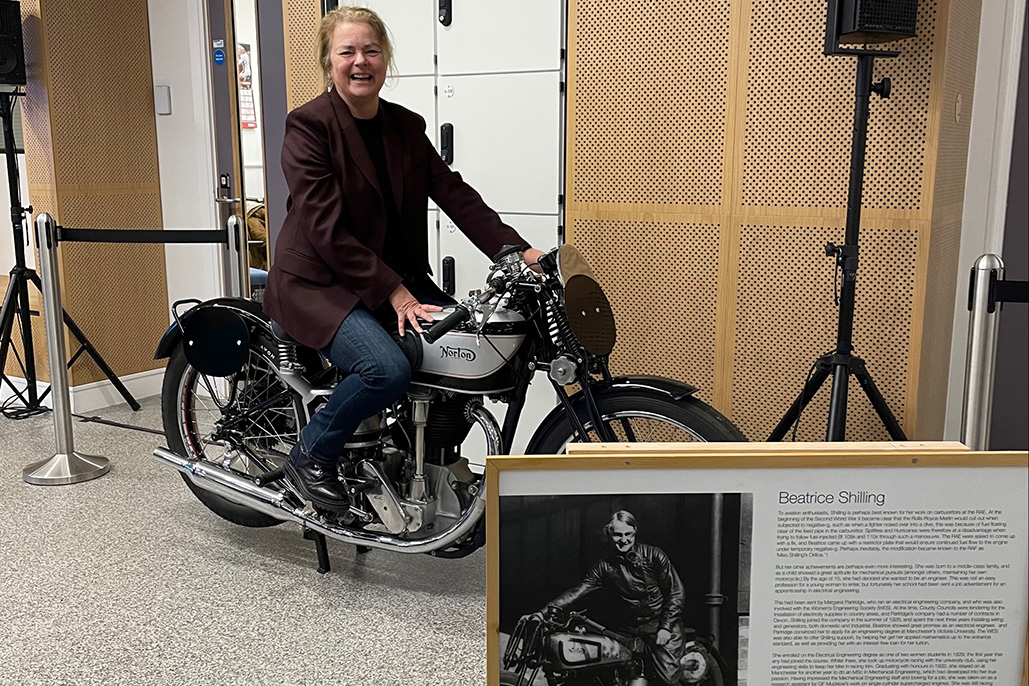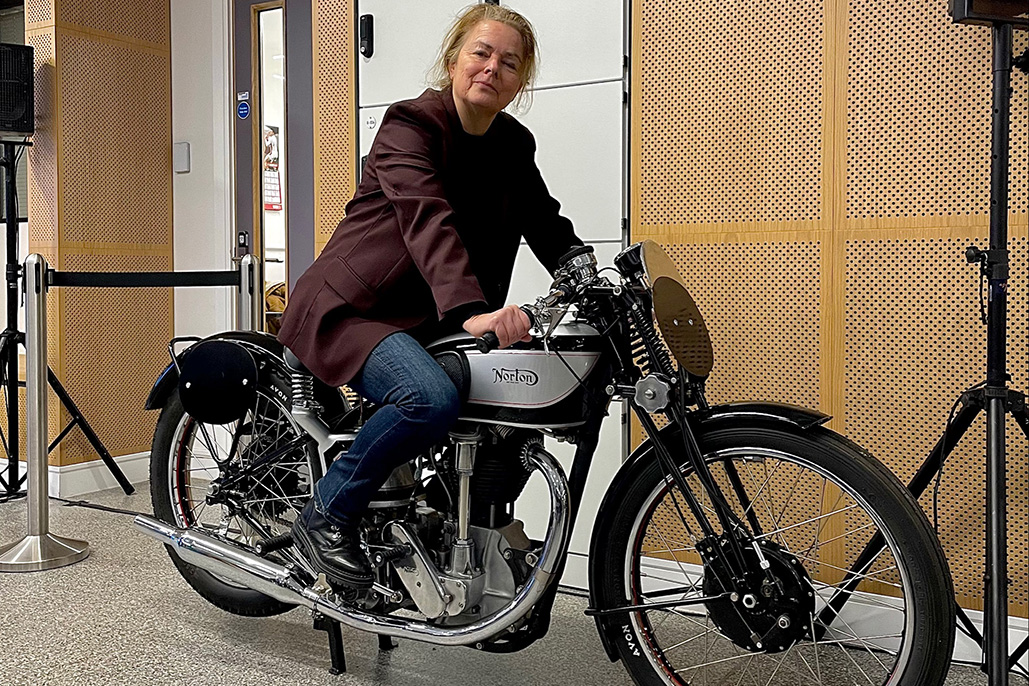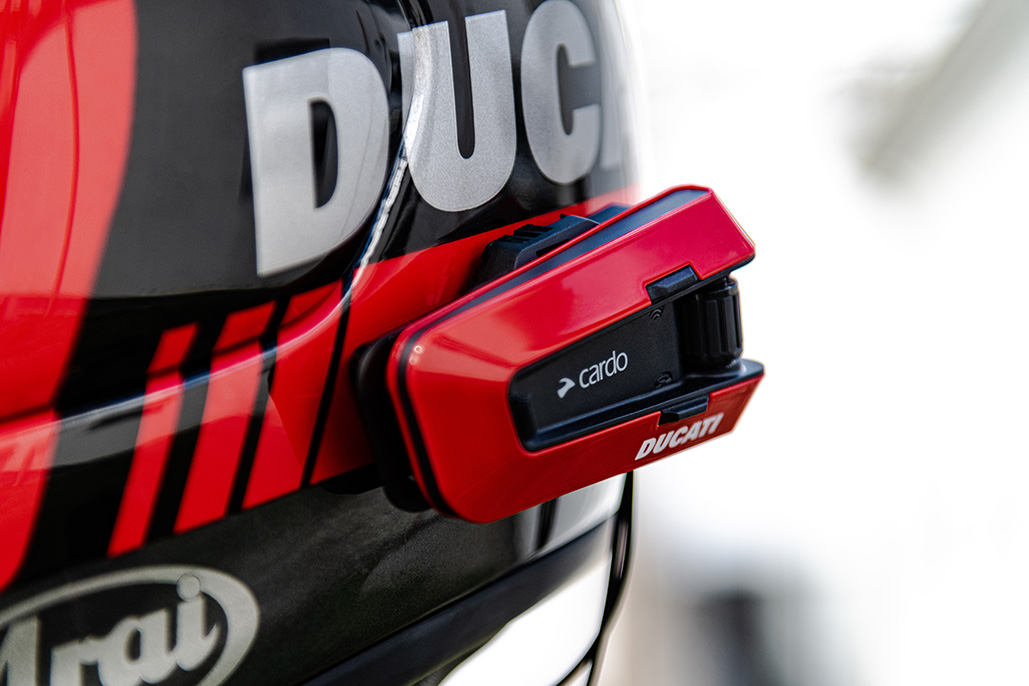Norton Motorcycles honours Beatrice Shilling
 Norton Motorcycles honours Beatrice Shilling with 1938 Norton International at opening of Coventry University building.
Norton Motorcycles honours Beatrice Shilling with 1938 Norton International at opening of Coventry University building.
Norton Motorcycles has presented its heritage collection 1938 Norton International at the official opening of the Coventry University’s Beatrice Shilling Building.
A pioneering mechanical engineer in both the fields of motorsport and STEM (Science, Technology, Engineering and Mathematics), in 1934, Beatrice Shilling became one of three women to win the Gold Star at the Brooklands circuit, completing a lap with an average speed of 101mph on her very own Norton M30 500cc.
In her honour, Coventry University has named its new Faculty of Engineering, Environment & Computing building after the famous engineer and motorcycle racer.
The official opening of the building was delayed due to COVID and rescheduled for 8th March on International Women’s Day, as well as what would have been Beatrice’s 114th birthday, and so the celebration of Shilling’s accomplishments within STEM and motorsport is timely.
For the event and to recognise the significance of Shilling’s contributions, Norton presented its 1938 Norton International – a close relation to the Norton M30 – from the heritage collection that usually resides within the foyer of the company’s Solihull headquarters.
The celebration welcomed as special guests Beatrice Shilling’s great-niece Jo Denbury and her daughter Saskia Preston, as well as Dr Anne-Marie Imafidon MBE, Co-founder and CEO of Stemettes, the award-winning social enterprise focussed on inspiring and supporting girls, young women and non-binary young people in STEM.
A woman in a man’s world: Life of Beatrice Shilling
1909 – Beatrice Shilling was born in Waterlooville, Hampshire.
1923 – At age 14, Beatrice reportedly bought her first motorcycle quickly learning to strip and rebuild its engine to improve the bike’s performance.
1929 – Having worked on motorcycles throughout her youth, Shilling was keen to pursue this passion and went on to study electrical engineering at The University of Manchester.
1932 – After receiving her Bachelor’s degree, Beatrice stayed on for a further year gaining a Master of Science degree in Mechanical Engineering.
1934 – A competitive motorcycle racer, Beatrice became one of only three women to win the Gold Star at the Brooklands circuit, finishing a lap with an average speed of over 100mph on her Norton M30 500cc. This was the fastest lap ever to be achieved in her time.
1936 – Unafraid to compete in a male-dominated industry, Beatrice was recruited to the Royal Aircraft Establishment (R.A.E.), writing manuals for aeroplane engines.
1939 – Three years later and Beatrice is promoted to Technical Officer, charged with carburettor research and development. It was at this point, World War II broke out and Beatrice’s expertise became crucial to the war effort. Working closely on the Rolls-Royce Merlin engine used in the Spitfire and Hurricane, Beatrice developed the R.A.E. restrictor to prevent the aeroplane engines from becoming flooded with fuel when entering a steep dive.
1949 – Beatrice was made an Officer of the Order of the British Empire (OBE) by King George VI.
1956 – Beatrice joined the Institution of Mechanical Engineers and was elected as an Associate Member. This was in addition to her long-standing membership of the Women’s Engineering Society.
1959 – Following World War II, she turned to racing cars with her husband George, including at Goodwood Members’ Meetings where they scored several high-placed results.
1969 – After retiring, Beatrice received an honorary doctorate from the University of Surrey.
1990 – Beatrice Shilling passed away at the age of 81 leaving a legacy of exceptional contribution to engineering and motor racing.
For more Norton Motorcycles check out our dedicated page Norton Motorcycles News
or head to the official Norton Motorcycles website nortonmotorcycles.com/














